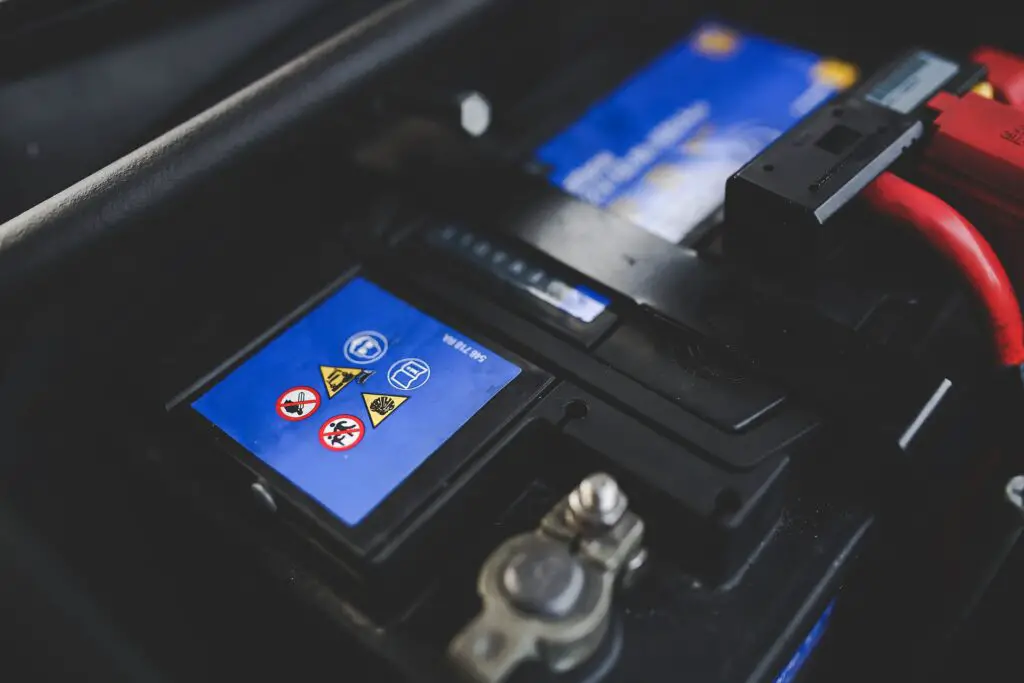If you’ve ever tried troubleshooting your car’s battery issues or simply wondered about what keeps your vehicle-powered, understanding car battery voltage is crucial. Car battery voltage isn’t just a number; it tells you a lot about your battery’s health, performance, and longevity.
In this article, we’ll break down what voltage means in a car battery, how to check it, and how to keep your battery running smoothly for longer.
What’s the Standard Voltage of a Car Battery?
A typical car battery is rated at 12 volts. But the story doesn’t end there. A car battery operates at around 12.6 to 12.8 volts when fully charged. That extra bit of power is essential for reliable startups and to keep the various electrical systems in your car running smoothly.
Here’s how it works:
- 12.6-12.8 volts: A fully charged, healthy battery.
- 12.4 volts or lower: Indicates a battery that may need charging or is starting to lose its charge.
- Below 12 volts: Generally signals a weak or dying battery, especially if it drops under 11.8 volts.
Understanding this range is key because even a small voltage drop can signal a big change in battery health.
Why Does Car Battery Voltage Matter?
The battery is the heart of your car’s electrical system. With the right voltage, it powers the starter motor, ignition, lights, radio, and other accessories. If the voltage drops too low, you could face a range of issues: For a better view of why car battery voltage matters, see the 5 functions of a car battery.
- Trouble Starting: Low voltage may mean your car struggles to start or doesn’t start at all.
- Electrical Malfunctions: Accessories like the radio, power windows, and lights may act up or fail to work.
- Battery Longevity: Keeping your battery at an optimal voltage helps extend its lifespan and ensures it won’t fail unexpectedly.
Regularly monitoring voltage can help detect early signs of battery wear, prevent breakdowns, and save money in the long run.
How to Check Your Car Battery Voltage
Testing your car battery’s voltage is a quick and straightforward way to monitor its health. Here’s a simple guide to do it yourself:
1. Get a Multimeter
A digital multimeter is a handy tool for checking voltage. You can find one at most auto parts stores or online.
2. Turn Off the Engine
Ensure your car is off and hasn’t been running recently, as heat can affect readings.
3. Connect the Multimeter
- Attach the red (positive) lead of the multimeter to the positive terminal on the battery which is bigger.
- Connect the black (negative) lead to the battery’s negative terminal which is small in size.
4. Read the Voltage
If your battery reads between 12.6 and 12.8 volts, it’s in great shape. A reading of 12.4 or below means your battery could use a charge, and anything under 12 volts indicates it’s likely time for a replacement.

What Happens When Car Battery Voltage Drops?
As the voltage dips, several things happen that can impact your car’s performance:
- Cold Cranking Amps Drop: A lower voltage means your battery’s ability to deliver high starting power (especially in cold weather) decreases.
- Accessory Power Loss: The radio, lights, and other electronics may drain faster or fail to function.
- Higher Risk of Failure: Low voltage indicates that the battery is not holding its charge, leading to quicker wear-out and possible failure resulting in frustration when needed for work.
Keeping Your Car Battery at Optimal Voltage
To ensure your car battery stays at a healthy voltage, here are a few maintenance tips:
- Regular Drives: Short trips can prevent the battery from fully charging. Aim to drive for at least 15-20 minutes to allow the alternator to keep the battery voltage charged.
- Limit Accessory Use: Try not to leave the radio, lights, or other accessories on when the engine is off, as they drain the battery.
- Test the Voltage Periodically: Make it a habit to check your battery voltage every few months or before long trips.
- Consider a Battery Tender: If you don’t drive often, a battery tender can help maintain charge without overcharging.
Final Thoughts: Why 12 Volts?
The 12-volt standard in car batteries has been around for decades and for good reason. It provides enough power to start the engine and run electronics without overwhelming the vehicle’s electrical system. Keeping an eye on this voltage not only helps you avoid a dead battery but also ensures your car performs at its best. In summary, a car battery is technically a 12-volt battery, but it should hold closer to 12.6 volts when fully charged.
Regular monitoring and maintenance will help keep your car battery healthy, extending its life and preventing inconvenient breakdowns. Next time you check your car’s battery, remember these numbers—they’re the key to a reliable and efficient driving experience.
Discover more from Chikwem
Subscribe to get the latest posts sent to your email.